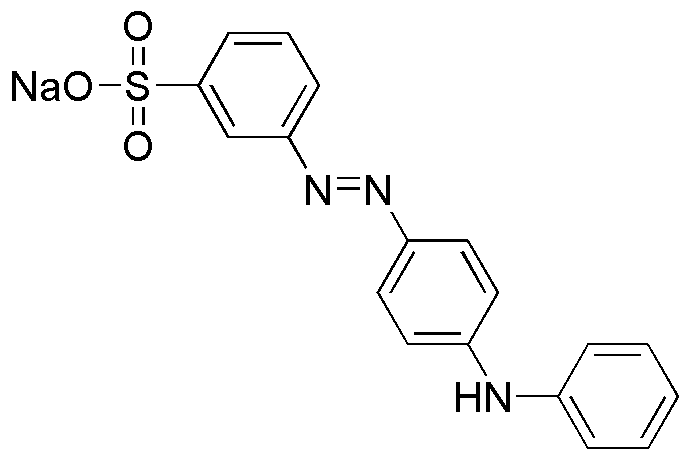Metanil Yellow is widely utilized in research focused on:
- Dye Industry: Commonly used as a dye in textiles, providing vibrant yellow hues. Its stability and brightness make it a preferred choice for fabric coloring.
- Food Industry: Employed as a food coloring agent, although its use is regulated in many regions due to health concerns. It offers an appealing color to various food products.
- Analytical Chemistry: Acts as a pH indicator in titrations, helping researchers determine acidity levels in solutions effectively.
- Biological Research: Utilized in staining techniques for microscopy, aiding in the visualization of cellular structures and processes in biological samples.
- Plastic Manufacturing: Incorporated in the production of colored plastics, enhancing aesthetic appeal while maintaining material properties.
General Information
Properties
Safety and Regulations
Applications
Metanil Yellow is widely utilized in research focused on:
- Dye Industry: Commonly used as a dye in textiles, providing vibrant yellow hues. Its stability and brightness make it a preferred choice for fabric coloring.
- Food Industry: Employed as a food coloring agent, although its use is regulated in many regions due to health concerns. It offers an appealing color to various food products.
- Analytical Chemistry: Acts as a pH indicator in titrations, helping researchers determine acidity levels in solutions effectively.
- Biological Research: Utilized in staining techniques for microscopy, aiding in the visualization of cellular structures and processes in biological samples.
- Plastic Manufacturing: Incorporated in the production of colored plastics, enhancing aesthetic appeal while maintaining material properties.
Documents
Safety Data Sheets (SDS)
The SDS provides comprehensive safety information on handling, storage, and disposal of the product.
Product Specification (PS)
The PS provides a comprehensive breakdown of the product’s properties, including chemical composition, physical state, purity, and storage requirements. It also details acceptable quality ranges and the product's intended applications.
Certificates of Analysis (COA)
Search for Certificates of Analysis (COA) by entering the products Lot Number. Lot and Batch Numbers can be found on a product’s label following the words ‘Lot’ or ‘Batch’.
*Catalog Number
*Lot Number
Certificates Of Origin (COO)
This COO confirms the country where the product was manufactured, and also details the materials and components used in it and whether it is derived from natural, synthetic, or other specific sources. This certificate may be required for customs, trade, and regulatory compliance.
*Catalog Number
*Lot Number
Safety Data Sheets (SDS)
The SDS provides comprehensive safety information on handling, storage, and disposal of the product.
DownloadProduct Specification (PS)
The PS provides a comprehensive breakdown of the product’s properties, including chemical composition, physical state, purity, and storage requirements. It also details acceptable quality ranges and the product's intended applications.
DownloadCertificates of Analysis (COA)
Search for Certificates of Analysis (COA) by entering the products Lot Number. Lot and Batch Numbers can be found on a product’s label following the words ‘Lot’ or ‘Batch’.
*Catalog Number
*Lot Number
Certificates Of Origin (COO)
This COO confirms the country where the product was manufactured, and also details the materials and components used in it and whether it is derived from natural, synthetic, or other specific sources. This certificate may be required for customs, trade, and regulatory compliance.


